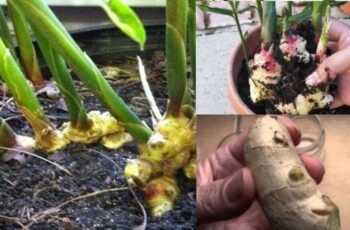Ad Blocker Detected
Our website is made possible by displaying online advertisements to our visitors. Please consider supporting us by disabling your ad blocker.
8. Not Providing Proper Support
Properly supporting tomato plants is essential for maximizing garden space, maintaining order, preventing disease and pest infestations, and facilitating harvesting. Both determinate and indeterminate tomato varieties benefit from support structures to keep them off the ground. When transplanting small plants, it’s important to support them immediately to avoid root damage.
Here are three popular ways to support tomatoes:
Staking involves using metal or wood stakes that are typically 3 to 6 feet long, depending on the variety of tomatoes. The plant’s main stem is tied loosely but securely to the stake as it grows taller.
Caging is a simple method that uses wire cages to contain plants and support their stems. The stems are pulled through the wire as the tomatoes grow.
Trellising is a functional and visually appealing support option, especially for indeterminate tomato varieties. It can be achieved using string, metal posts, or wire tied together in rows, as long as the structure is sturdy enough to hold up the heavy limbs of the plants.
9. Under-Pruning or Over-Pruning Tomato Plants
To avoid damaging your tomato plants, it’s important to prune them properly according to their variety. For determinate plants, avoid pruning as it can reduce harvest.
Indeterminate plants, on the other hand, benefit from pruning once they reach a height of 6 to 8 inches. When pruning, remove the leaves at the end of a stem up to the next stem or node to improve airflow and prevent disease. This can also result in quicker ripening and a higher yield of larger fruit per plant.
However, be careful not to over-prune your tomato plants, as this can lead to sunscald and pale spots on the fruit due to over-exposure to the sun. To ensure proper shade for your plants, always leave enough leaves on the plant after pruning.
10. Letting Pests Eat Your Tomatoes Before You Can
Preventing Tomato Pests from Damaging Your Plants
Even if you take good care of your tomato plants, pests can still find their way to your garden and cause damage to your produce. Here are some common tomato pests to watch out for and how to deal with them:
Hornworms are green caterpillars that can be 2 to 5 inches long and may nibble on the edges of tomato leaves. If you spot them, simply pluck or knock them off the leaves and into a bucket of soapy water. Spider mites can cause spots on the surface of leaves and gather on their undersides.
You can spray both sides of the leaves with a garden hose to remove them or try using insecticidal soap. Stink bugs may leave pale spots on tomato plants by sucking sap from their fruit. Although stink bugs can be annoying, the unspotted parts of tomatoes are still edible. To get rid of stink bugs, you can spray them with warm, soapy water or drown them in a soapy solution when you see them.
By keeping an eye out for these pests and taking action when necessary, you can protect your tomato plants and enjoy a bountiful harvest.
[mashshare]

